Student Union
Student Newspapers Face Real World Challenges

The Daily Orange isn't daily anymore.
The student-run newspaper has covered Syracuse University since 1903 and trained generations of journalists, but it now prints just three issues per week.
Editor-in-chief Haley Robertson said she is looking for advertisers, worries about firing friends who work as staff, and searches for alumni donors who will pay to send reporters on the road to cover the university's sports teams.
These problems are similar to those faced by executives two or three times her age -- evidence of how the news industry's woes have seeped onto campuses. The schools are trying to harness youthful energy and idealism to turn out professionals who can inform the world, according to the Associated Press, which reported this story about student journalists in a recent article.
"When I look at local news and see what's happening, I'm pessimistic,'' said Kathleen Culver, journalism professor at the University of Wisconsin-Madison. "When I look at 18- and 20-year-olds and see what they want to do, I'm optimistic.''
Despite the challenges and an uncertain future, the student journalists continue to hone their craft, one story at a time. According to the AP, enrollment in journalism programs is up, and suggested that frequent attacks on the press have given birth to a new resolve. It was an apparent reference to President Donald Trump, whom the article did not mention by name. Trump has denounced the news media as an enemy that produces what he has termed "fake news."
Learning by doing
Thousands of young journalists train in classrooms and in student-run newsrooms. For college student Robertson, that means hours a day in a dingy office with yellowed headlines glued to the wall, metal file cabinets signed by editors dating back nearly 50 years and a ripped upholstered couch carried from The Daily Orange's old office, which is now the site of a parking lot.
Occasionally, college publications like The Daily Orange make national news by breaking news. In 2018, the paper first posted video of racist and sexist comments made at a Syracuse fraternity, leading to embarrassing headlines for the university across the country. Daily Orange managing editor Catherine Leffert sat on the floor at a campus meeting as that story developed, tapping out updates on her mobile phone, and slept on the office couch in two-hour intervals. The fraternity was suspended, AP reports.
"What keeps me wanting to be a journalist and wanting to do it here is seeing the effect that The Daily Orange has. It's really cool and exciting," said Leffert as she acknowledged that seeing layoffs and newsroom cutbacks "was really disheartening."
Last year, Arizona State University's student newspaper, The State Press, was the first outlet in the United States with word of the resignation of Kurt Volker, U.S. envoy to Ukraine. Volker runs Arizona State's McCain Institute for International Leadership.
Cutting up the paper
Thirty-five percent of school papers say they have reduced the frequency of print issues to save money, according to a College Media Association (CMA) survey taken back in 2019, said Chris Evans, CMA president and adviser to the University of Vermont newspaper, to the AP.
Five percent have gone online only, as the University of Maryland's The Diamondback said that it would do early next year. Half of the newspapers that haven't abandoned publications like The Daily Orange, said they are not printing as many copies.
Robertson touts the transition as a way to follow the industry by going digital, and The Daily Orange has an active website and social media presence.
The University of North Carolina's The Daily Tar Heel switched to publishing three days a week in 2017, when its directors realized they were going broke, said Maddy Arrowood, the paper's editor-in-chief. The newspaper cut the pay of staff members and moved into a new, smaller office above a restaurant.
"I spend most of my time very aware of our financial situation,'' Arrowood said. "We're always trying to tell the newsroom that your goal is to produce the best content that you can and be an indispensable resource for our readers.''
Last year, The Daily Tar Heel reported a tiny profit.
Struggling with a $280,000 debt, The Hilltop at Howard University printed its first edition this semester in mid-October. The Maneater at the University of Missouri used to print twice a week, then once. Now it's down to once a month. It operates separately from a newspaper staffed by faculty and students in the university journalism school.
Staff members are now charged annual dues, said Leah Glasser, the paper's editor. They can avoid the "dues" if they find an alumni sponsor or sell enough advertising to cover it. The paper has a website, and Glasser and her staff are slowly getting used to the new monthly schedule.
"It's so difficult to hear, 'We don't have enough money,''' she said. "We hear that a lot. As a generation, that doesn't make us turn around and go home.''
Newspaper jobs across the country sank from 52,000 in 2008 to 24,000 now, according to the University of North Carolina, AP reports.
Funding sources
Newspapers like The Daily Orange and The Daily Tar Heel don't take money from the university or fellow students, believing that to be a conflict of interest. Most publications do, however. Tammy Merrett, faculty adviser to The Alestle at Southern Illinois University at Edwardsville, doesn't know how her paper would survive without it.
In 2008, The Alestle's ad revenue was about $150,000 a year, aided by slick ads taken out by military recruiters, Planned Parenthood and local supermarkets. Now, the paper struggles to make $30,000 a year in ad sales.
"At some universities, they have to approach student government directly and ask for funds, and there have been some instances where student government doesn't like the coverage, so they deny it,'' Merrett said. "Luckily, that doesn't happen here.''
Amid the worries, North Carolina's Arrowood said her experience makes her more interested in a journalism career, not less. Her optimism "comes from knowing that people still need news, they still need information, and I've gotten to see that in a lot of ways,'' she said. "I'm willing to meet people where they are.
"What I want to do is still something that people need,'' she said.
With that, she cut the conversation short. Arrowood had a class to attend.
See all News Updates of the Day
- By VOA News
Competition grows for international students eyeing Yale
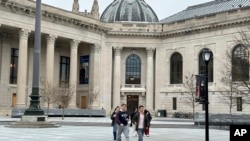
It’s tough to gain admission to Yale University, and it’s getting even tougher for international students as standout students from around the world set their sights on Yale.
The Yale Dale News, the campus newspaper, takes a look at the situation here.
- By VOA News
Student from Ethiopia says Whitman College culture made it easy to settle in

Ruth Chane, a computer science major from Ethiopia, writes about her experiences settling into student life at Whitman College in the U.S. state of Washington.
"The community at Whitman College made sure I felt welcomed even before I stepped foot on campus," she says.
- By VOA News
Claremont Colleges student gets a shock when she heads home to Shanghai
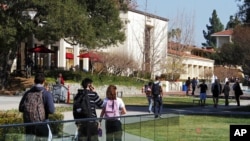
In The Student Life, the student newspaper for the Claremont Colleges, a consortium of five liberal art colleges and two graduate schools in Claremont, California, student Rochelle Lu writes about readjusting to her Shanghai home after spending a semester in the United States.
- By VOA News
Cedarville University aims to ease transition for international students
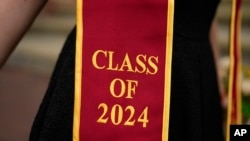
Cedarville University in the U.S. state of Ohio says it’s got more than 140 international students representing 44 countries.
Here, the school interviews Jonathan Sutton, director of international student services. He talks about his job and the opportunities for international students on campus.
- By VOA News
Morehouse College offers prospective students tips on applying and thriving
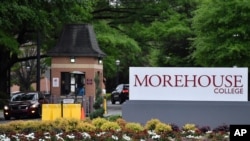
Morehouse College, a private, historically Black liberal arts college in the U.S. state of Georgia, offers a guide for international students interested in attending the school.
Among the tips to apply and thrive at Morehouse:
- Take advantage of the school’s orientation program
- Turn to the school’s Center for Academic Success for tutoring, support and more
- Immerse yourself in campus life via clubs and societies
- By Reuters
US reviews Columbia University contracts, grants over antisemitism allegations

The administration of President Donald Trump said on Monday it will review Columbia University's federal contracts and grants over allegations of antisemitism, which it says the educational institution has shown inaction in tackling.
Rights advocates note rising antisemitism, Islamophobia and anti-Arab bias since U.S. ally Israel's devastating military assault on Gaza began after Palestinian Hamas militants' deadly October 2023 attack.
The Justice Department said a month ago it formed a task force to fight antisemitism. The U.S. Departments of Health and Education and the General Services Administration jointly made the review announcement on Monday.
"The Federal Government's Task Force to Combat Anti-Semitism is considering Stop Work Orders for $51.4 million in contracts between Columbia University and the Federal Government," the joint statement said.
The agencies said no contracting actions had been taken yet.
"The task force will also conduct a comprehensive review of the more than $5 billion in federal grant commitments to Columbia University."
The agencies did not respond to requests for comment on whether there were similar reviews over allegations of Islamophobia and anti-Arab bias.
Columbia had no immediate comment. It previously said it made efforts to tackle antisemitism.
College protests
Trump has signed an executive order to combat antisemitism and pledged to deport non-citizen college students and others who took part in pro-Palestinian protests.
Columbia was at the center of college protests in which demonstrators demanded an end to U.S. support for Israel due to the humanitarian crisis caused by Israel's assault on Gaza. There were allegations of antisemitism and Islamophobia in protests and counter-protests.
During last summer's demonstrations around the country, classes were canceled, some university administrators resigned and student protesters were suspended and arrested.
While the intensity of protests has decreased in recent months, there were some demonstrations last week in New York after the expulsion of two students at Columbia University-affiliated Barnard College and after New York Governor Kathy Hochul ordered the removal of a Palestinian studies job listing at Hunter College.
A third student at Barnard College has since been expelled, this one related to the occupation of the Hamilton Hall building at Columbia last year.
Canada’s immigration overhaul signals global shift in student migration
From Europe to North America, nations are tightening their immigration policies. Now Canada, long seen as one of the world's most welcoming nations, has introduced sweeping changes affecting international students. The reforms highlight a growing global trend toward more restrictive immigration policies. Arzouma Kompaore reports from Calgary.
Trump administration opens antisemitism inquiries at 5 colleges, including Columbia and Berkeley
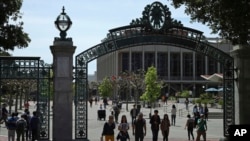
The Trump administration is opening new investigations into allegations of antisemitism at five U.S. universities including Columbia and the University of California, Berkeley, the Education Department announced Monday.
It's part of President Donald Trump's promise to take a tougher stance against campus antisemitism and deal out harsher penalties than the Biden administration, which settled a flurry of cases with universities in its final weeks. It comes the same day the Justice Department announced a new task force to root out antisemitism on college campuses.
In an order signed last week, Trump called for aggressive action to fight anti-Jewish bias on campuses, including the deportation of foreign students who have participated in pro-Palestinian protests.
Along with Columbia and Berkeley, the department is now investigating the University of Minnesota, Northwestern University and Portland State University. The cases were opened using the department's power to launch its own civil rights reviews, unlike the majority of investigations, which stem from complaints.
Messages seeking comment were left with all five universities.
A statement from the Education Department criticized colleges for tolerating antisemitism after Hamas' Oct. 7, 2023, attack on Israel and a wave of pro-Palestinian protests that followed. It also criticized the Biden administration for negotiating "toothless" resolutions that failed to hold schools accountable.
"Today, the Department is putting universities, colleges, and K-12 schools on notice: this administration will not tolerate continued institutional indifference to the wellbeing of Jewish students on American campuses," said Craig Trainor, the agency's acting assistant secretary for civil rights.
The department didn't provide details about the inquiries or how it decided which schools are being targeted. Presidents of Columbia and Northwestern were among those called to testify on Capitol Hill last year as Republicans sought accountability for allegations of antisemitism. The hearings contributed to the resignation of multiple university presidents, including Columbia's Minouche Shafik.
An October report from House Republicans accused Columbia of failing to punish pro-Palestinian students who took over a campus building, and it called Northwestern's negotiations with student protesters a "stunning capitulation."
House Republicans applauded the new investigations. Representative Tim Walberg, chair of the Education and Workforce Committee, said he was "glad that we finally have an administration who is taking action to protect Jewish students."
Trump's order also calls for a full review of antisemitism complaints filed with the Education Department since Oct. 7, 2023, including pending and resolved cases from the Biden administration. It encourages the Justice Department to take action to enforce civil rights laws.
Last week's order drew backlash from civil rights groups who said it violated First Amendment rights that protect political speech.
The new task force announced Monday includes the Justice and Education departments along with Health and Human Services.
"The Department takes seriously our responsibility to eradicate this hatred wherever it is found," said Leo Terrell, assistant attorney general for civil rights. "The Task Force to Combat Anti-Semitism is the first step in giving life to President Trump's renewed commitment to ending anti-Semitism in our schools."
- By VOA News
STEM, business top subjects for international students
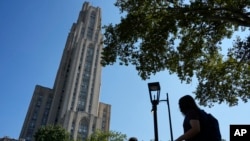
The Times of India breaks down the most popular subjects for international students to study in the U.S.
STEM and business lead the pack. Read the full story here. (January 2025)
- By VOA News
Safety and visa difficulties among misconceptions about US colleges

U.S. News & World report addresses some of the misconceptions about U.S. colleges and universities, including the difficulty of getting a visa.
Read the full story here. (January 2025)
- By VOA News
Work opportunities help draw international students to US schools
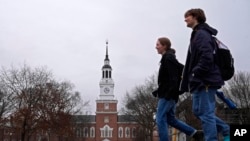
US News & World Report details the three top factors in foreign students' decision to study in the U.S. They include research opportunities and the reputation of U.S. degrees. Read the full story here. (December 2024)
- By VOA News
British student talks about her culture shock in Ohio
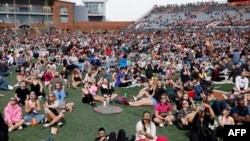
A British student who did a year abroad at Bowling Green State University in Ohio talks about adjusting to life in America in a TikTok video, Newsweek magazine reports.
Among the biggest surprises? Portion sizes, jaywalking laws and dorm room beds.
Read the full story here. (December 2024)
- By VOA News
Harvard's Chan School tells international students what to expect
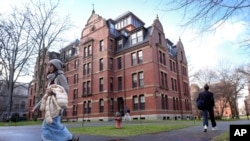
Harvard's T.H. Chan School of Public Health reaches out to international students by detailing the international student experience at the school.
Learn more about housing, life in Boston and more here.
- By Reuters
China unveils plan to build 'strong education nation' by 2035
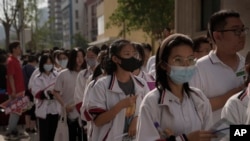
China issued its first national action plan to build a "strong education nation" by 2035, which it said would help coordinate its education development, improve efficiencies in innovation and build a "strong country."
The plan, issued Sunday by the Communist Party's central committee and the State Council, aims to establish a "high quality education system" with accessibility and quality "among the best in the world."
The announcement was made after data on Friday showed China's population fell for a third consecutive year in 2024, with the number of deaths outpacing a slight increase in births, and experts cautioning that the downturn will worsen in the coming years.
High childcare and education costs have been a key factor for many young Chinese opting out of having children, at a time when many face uncertainty over their job prospects amid sluggish economic growth.
"By 2035, an education power will be built," the official Xinhua news agency said, adding that China would explore gradually expanding the scope of free education, increase "high-quality" undergraduate enrolment, expand postgraduate education, and raise the proportion of doctoral students.
The plan aims to promote "healthy growth and all-round development of students," making sure primary and secondary school students have at least two hours of physical activity daily, to effectively control the myopia, or nearsightedness, and obesity rates.
"Popularizing" mental health education and establishing a national student mental health monitoring and early warning system would also be implemented, it said.
It also aims to narrow the gap between urban and rural areas to improve the operating conditions of small-scale rural schools and improve the care system for children with disabilities and those belonging to agricultural migrant populations.
The plan also aims to steadily increase the supply of kindergarten places and the accessibility of preschool education.
- By VOA News
A look at financial aid options for international graduate students in US
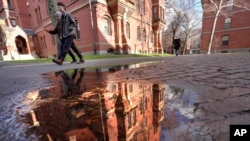
The Open Notebook, a site focusing on educating journalists who cover science, has complied a list of U.S. graduate program financial aid information for international students.








